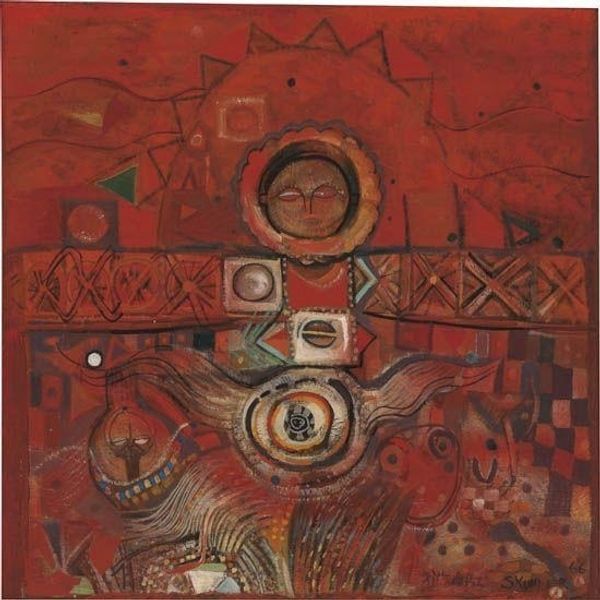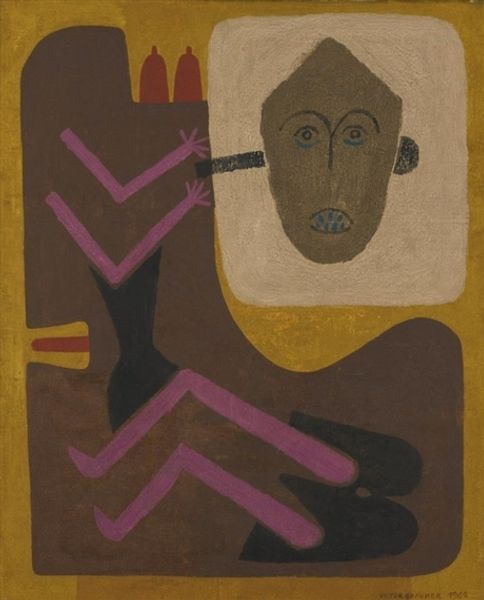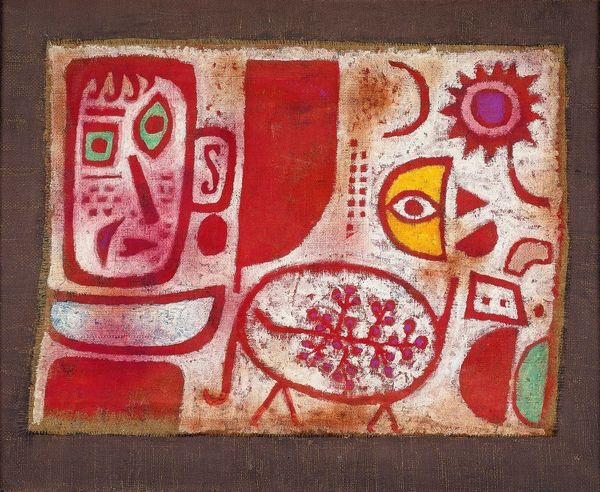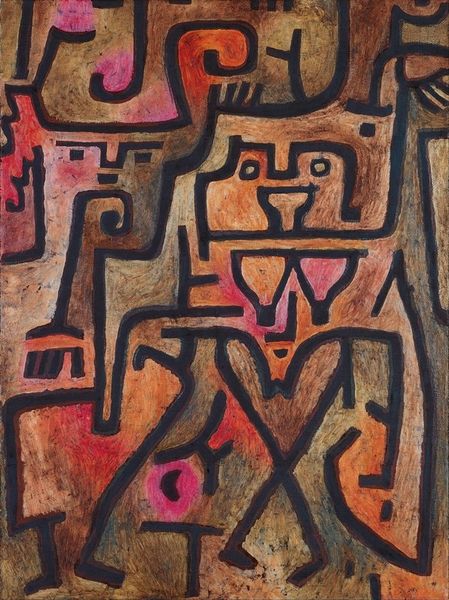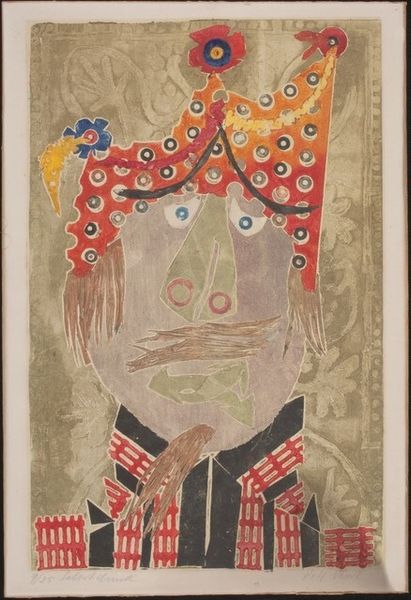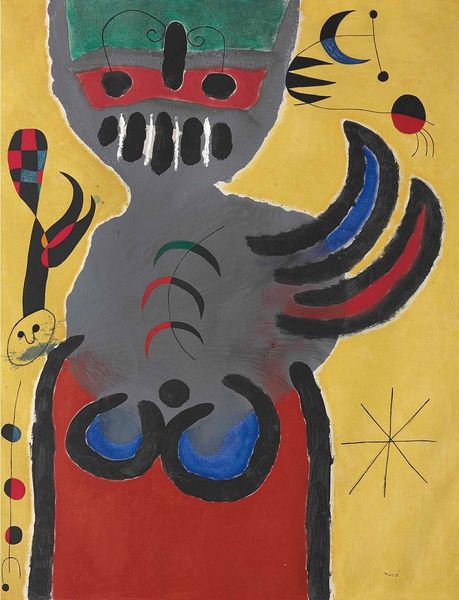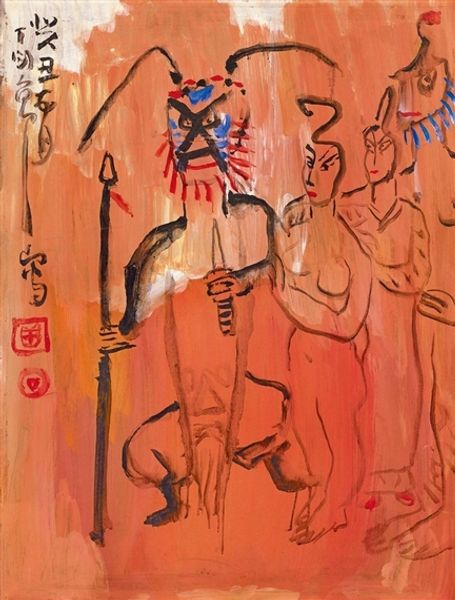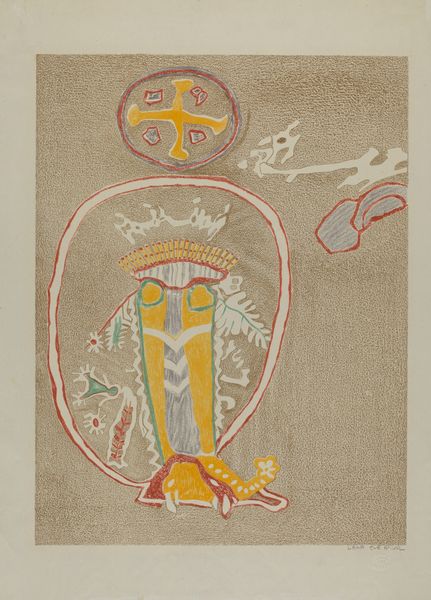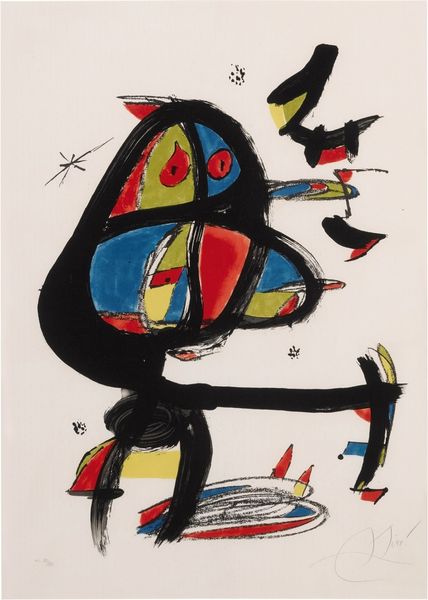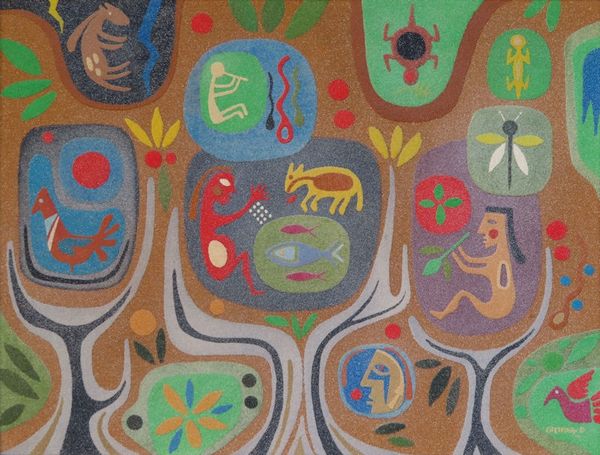
screenprint, print
#
screenprint
#
narrative-art
# print
#
geometric
Copyright: National Gallery of Art: CC0 1.0
Louie H. Ewing made this print, titled "Pueblo Pictograph," at some point in the mid-20th century, borrowing imagery from indigenous art to create something new. Ewing was working at a time when American artists were looking to indigenous cultures for inspiration, often reinterpreting traditional forms for a contemporary audience. The image shows a series of stylized figures and geometric shapes, reminiscent of the rock art found in the Southwestern United States. But while it references an ancient tradition, we can see it through the lens of mid-century modernism, with its clean lines and simplified forms. The early and mid-20th century saw the opening of various museums and galleries dedicated to Native American art, contributing to its visibility and appreciation. However, this institutionalization also led to questions about cultural appropriation and the representation of indigenous voices. To understand this artwork, we might look at the history of Native American art institutions, the biographies of individual artists, and the social and political context of the time. Art history is not just about aesthetics; it's about understanding the complex interplay of culture, history, and power.
Comments
No comments
Be the first to comment and join the conversation on the ultimate creative platform.
